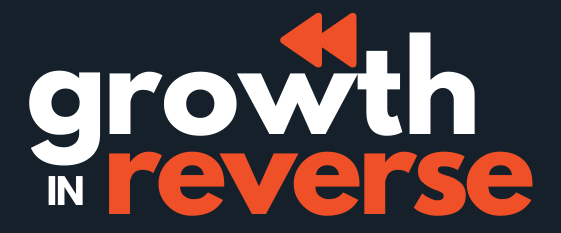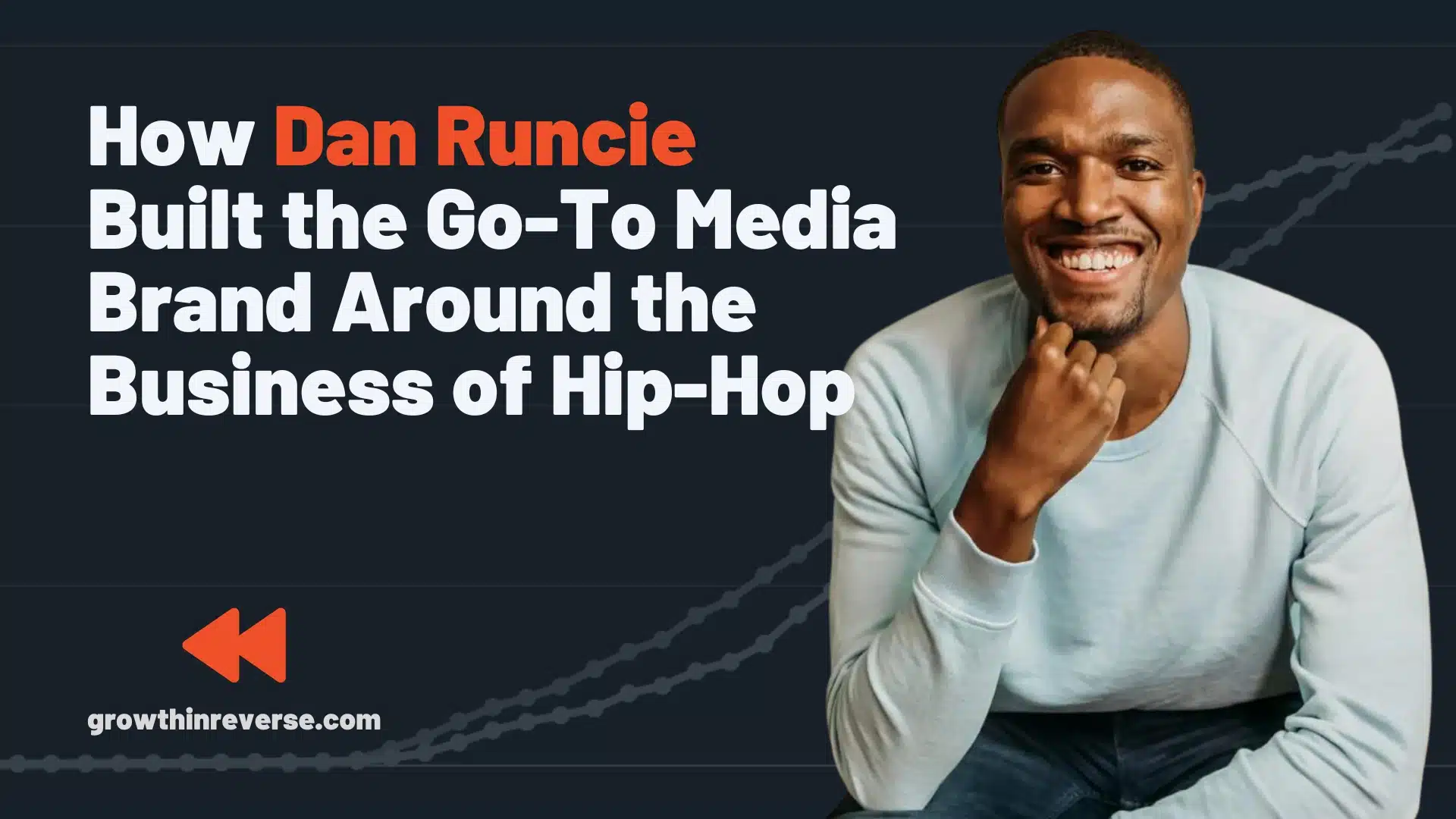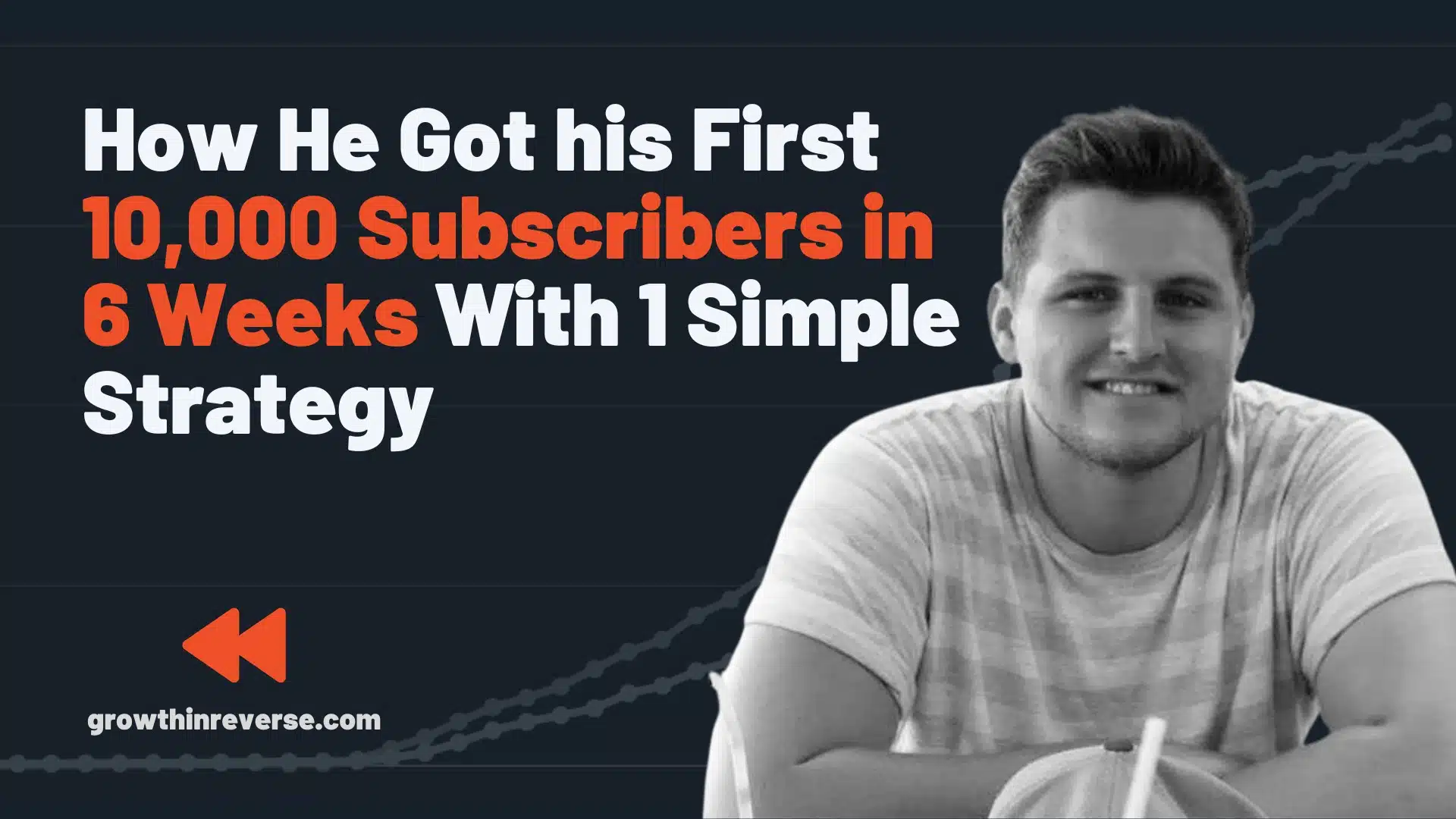If you’ve spent any time on Twitter, you’ve seen his tweets.
He was one of the first people who wrote threads on Twitter, back when you had to manually add each tweet as a comment.
His consistency and hard work have built an audience that now sits at 1.9 million across social platforms and his newsletter.
And his hair is something people just can’t stop talking about.

The Backstory
Sahil Bloom was working at a private equity firm when the fateful March 2020 hit.
Instead of working 70+ hour weeks and traveling all the time, he was suddenly at home with not much to do.
He had been sending out a monthly email to some close family and friends where he would share what he read that month, along with some takeaways.
I came across this old about page he had on his website, and the last line just strikes me as interesting.

It almost feels like a bit of foreshadowing, as he knew the career at Altamont Capital wasn’t going to be forever.
The Growth Timeline
The growth of Sahil Bloom has been very fast. Since he wrote his first Twitter thread in May 2020, he’s now closing in at one million followers on the platform.

More recently, he’s added LinkedIn and Instagram, and growth there is moving fast, with both of those accounts having over 250k followers in just a few months.
And his newsletter, The Curiosity Chronicle now has over 400k subscribers.
If you look at that growth timeline above, his Twitter growth has continued to almost double every year:
- May 2020 – 500 followers
- May 2021 – 187k followers
- May 2022 – 580k followers
- May 2023 – 937k followers
Clearly, the first year was much more than double, but after you reach a certain scale it seems to get harder to find growth like that. Which is why it’s amazing to look at his chart and see that.
Sahil Blooms Growth Levers
I found way too many good tactics in here to only include the typical 3-5 like I normally do, so buckle up! 🙂
1. Borrow from successful bloggers. There is a reason that writers and bloggers structure their websites/content in a specific way. Sahil took this strategy and ran with it.
2. Consistency & hard work. Yes, it’s basic. But it’s critical. Sahil gives examples of why consistency is foundational to being seen as an expert.
3. Expanding your topics. If he had stayed within the financial space, his following would have been capped at 100k.
4. Build out a learning engine. Consumption isn’t bad if you do it well. In fact, it’s almost a necessary aspect of being able to come up with unique ideas.
5. Templates & repurposing. There are a number of templates that Sahil has used to build his following. I’ll break down a few of them.
6. Hustle for distribution. If you create great content but no one sees it, does it even exist? Sahil has worked hard from the beginning to make sure his content gets found.
7. Community. The super-effective “100k Club” that Sahil was in includes a few names you’ve probably seen before 🙂
8. Bonus growth levers. These are what Sahil is doing now to expand his audience even more.
1. Borrow From Successful Bloggers
Sahil Bloom uses what he’s referred to as “growth loops” to exponentially grow his audience.
There are a number of methods “bloggers” use to build a content ecosystem that continues to work for them again and again.
Sahil has taken some of these tactics and implemented them for his own content…but instead of on a blog, he does this on Twitter.
I think he started figuring out this strategy around December 2020 when Alex Lieberman posted this:
Since that time, Sahil has implemented a strategy similar to what Ben Thompson does on his blog/newsletter.
There are a few ways he does this, which I’ll get into here shortly.
A. Hit Topics From Every Angle
A lot of bloggers will create listicle-type posts, where they run through a number of past things they’ve written.
Or, they’ll include a list of topics, and make sure to sprinkle internal links back to previous posts they’ve created.
Sahil does this exact thing but on Twitter.
Let’s look at an example with The Feynman Technique.
First, he writes a piece of “pillar” content around the Feynman Technique. Think of this like the Ultimate Guide piece of content that is a comprehensive article on the topic.
Once that’s done, he can start including it in future “roundup” or “listicle” type posts. Here are a few examples where he’s linked back to the Feynman Technique thread:
- “Top 10 Favorite threads from the last year” thread
- “10 threads to help you on your growth journey” here
- “20 lifelong learning habits” here
- “10 threads to accelerate your career” here
- “Frameworks to provide clarity in complex situations” thread
After all of that, he updates the thread about 9 months later and rewrites the entire thing.
Once he had this new piece of content, he started linking to the one in new “roundup” posts instead.
These are very similar tactics to what bloggers do on their own websites, but he’s just changing up the medium. Super smart.
B. Link to Related Content at the End of a Post
At the end of every post Ben Thompson (and most bloggers) create, there will be a “related articles” section for people to continue reading or dive deeper into a topic.
Sahil started to implement this on Twitter as well.
At the end of his threads, he often will include a “if you like this, go read this other thread” type of call to action:
A lot of the time he linked to his “thread of threads” which I’ll explain more below.
Here’s another example where he links to “5 powerful mental models” thread below his Feynman Technique thread:
Underneath that call to action, he gives the option to sign up for his newsletter as well.
Why This Works:
- You’re keeping people on the platform. This is kind of the equivalent of having a suggested video at the end of your YouTube video because YouTube wants people to stay on the platform. While this isn’t a proven thing, I have to imagine the Twitter algorithm loves this.
- If you read enough of his content, you’re probably going to follow him.
C. Thread of Threads AKA Twitter Blogroll
A few months after he got started, Sahil created a thread that includes all of the past threads that he’s written. Sounds pretty meta, and it is.
Being able to scroll through this to find a topic you might like is pretty cool.
And it also really reminds me of a blog “archive” or blog roll page: essentially a list of all past articles written on that website.
While I know Sahil started doing this before he even knew who Ben Thompson was, it’s pretty interesting that he inadvertently created something like that for himself.
If you’re just learning about Sahil, you can scroll back through all of his articles and get a sense of how he writes, and start consuming his work.
2. Consistency & Hard Work
This is often one of the most overlooked traits of successful creators, because it’s not a shiny tactic you can use quickly.
But it’s arguably one of the most impactful.
Sahil has always said that he’s not the best at anything he does, but he will outwork you. He’s had this mentality since his college baseball days at Stanford, and hasn’t given it up since.
He published threads a minimum of 2x a week, often more, during his first year. To this day, he consistently puts out at least 1 thread per week, usually on Saturday mornings.
He doesn’t miss. And his audience has grown to know him as the thread guy because he just keeps showing up.
Consistency Leads to Credibility
When you show up every day, every week over and over, people start to notice. You become that person who knows your topic best.
In a recent interview, he gave the example of consistency leading to credibility with James Clear.
He said that James Clear was not credible about habits until he wrote Atomic Habits, or until he wrote a blog for 6 years about habits.
In the same way that Ryan Holiday wasn’t credible about the Stoics until he just showed up consistently to talk about them.
If you show up over and over, people come to know you and take you more seriously than someone who talks about a topic for a little while and then disappears.
3. Expanding Topics
Sahil got started writing on Twitter around May of 2020, in the middle of the COVID crisis.
He found himself on Twitter a lot because that’s where you can get more real-time insights about markets and what was happening with the shutdowns.
There was a lot of chatter on Twitter but it was all really deep in the weeds and hard for “regular” people to understand.
On top of that, his family and friends were starting to come to him much more often to better understand these financial topics.
When he looked for a resource to send them to, all he could find were people talking about these topics in a way that the average consumer could never understand.
He decided to change that, and create content that his friends and family could understand.
That’s how he got started, but he knew he would want to expand the topics he wrote about.
Transitioning Into Other Topics
From the early days of writing on Twitter, Sahil knew that if he wanted to build a big audience, he was going to have to talk about more than just finance.
He told Jay Clouse that he looked around and saw that most of the big finance accounts on Twitter topped out at around 100k followers.
He knew that if started including business, personal growth, and productivity topics, he could expand his reach quite a bit. So that’s what he did.
Writing About Business & Notable People
Around August 2020 he started putting together threads on interesting people from history and telling their stories.
It wasn’t a quick switch to this content, but he definitely started testing it at this point.
These were in-depth posts, not just the typical “Wikipedia style” posts you see otherwise.
He started putting out a mix of educational “101” type posts, as well as these storytelling posts.
Listen for Signal
Sahil is a thinker. There is no doubt about that.
But he’s really good at combining that “thinking” side of him with data he’s getting from his audience.
Sahil is constantly testing out the ideas he’s thinking about to see what lands with his audience and what he should go deeper on.
If you’ve followed him for any stretch of time, you’ll know that one of the topics he covers A LOT is around the idea of “luck.”
So let’s dig into this example and I’ll show you what I mean.
Luck & Engineered Serendipity Example
The first time I can find him talking about “luck” honestly dates back to 2014.
Note: He had a Twitter account back then because he was playing college baseball, but he didn’t have any meaningful following at the time.
He referred to “luck” as “engineered serendipity” and did for a while:
He tweets about this 2 more times over the coming months, and then it’s not mentioned again until September 2020 in a reply to Anthony Pompliano.

- January 15, 2022 – mentions engineered serendipity in a thread
- January 29, 2022 – mentions the serendipity razor in a thread
- January 30, 2022 – mentions luck in a thread about topics he was thinking about
- February 6, 2022 – talks about increasing luck surface area in another thread of ideas he was thinking about
- This tweet got some of the most engagement out of the entire thread
- February 12, 2022 – First tweet he writes on the topic of luck. “5 simple ways to increase your luck”
- He posts below that: “I’ve written about “engineered serendipity” in the past. The idea that you can create or manufacture some luck. This is closely related with the idea of “luck surface area” as well. I’ve been trying to write a more comprehensive piece on the topic—I think it’ll eventually flow.”
- February 16, 2022 – mentions luck surface area in a thread about how he creates an “energy calendar”
- February 18, 2022 – adds a tweet to that previous “5 simple ways to increase your luck” tweet from a few days prior saying that he’s going to drop the thread over the weekend.
- February 19, 2022 – creates a full thread around “How to Create More Luck”
- March 9, 2022 – Writes a full article that went out to his newsletter titled “How to Get Lucky: 20 ways to increase your luck surface area and create more luck”
All of these could be considered data points.
If he talks about 20 ideas, he can look for the ones that had the most engagement, whether its likes, bookmarks, etc. and start to expand on those topics.
4. A Learning Engine
Every day, Sahil spends time reading or consuming content related to topics he’s interested in.
In an interview with Varun Duggi, Sahil says:
Every idea that you share is downstream from something you consume.”
Sahil Bloom
One thing I didn’t realize before doing this research was just how much Sahil reads.
This was usually 2-3 books and a few articles he’d found interesting.
I found his GoodReads page, and he has over 170 books read that he captured there. It’s actually pretty insightful to see what kind of topics he read.
Sadly, he stopped updating this page in early 2021, because it would be really insightful to be able to match up his reading habits with his content creation.
He says he is constantly reading, talking to interesting people, etc. and those are where he gets his ideas from. He purposefully makes time to consume good information to get these ideas.
Once he has an idea he’s interested in, he takes the time to “wrestle” with it and figure out how it relates to your life, other beliefs you have, etc.
He is also a huge believer that you need to find ways to be bored. He does this by going on multiple walks every day, often with his phone turned off, or without it altogether.
He’ll bring a notebook if he needs to jot down ideas. Once he’s back, he adds them into Notion to help keep track of his ideas.
He’ll take these concepts and ideas and eventually turn those into full articles and Twitter threads.
5. Templates & Repurposing
Twitter loves its templates. And Sahil has quite a few that he has used in the past.
Shout out to Ethan Brooks for surfacing something of these well before I was even writing this newsletter.
Here are 2 of the templates I’ve found Sahil using again and again.
The Most Powerful ___’s
A lot of what he writes about is paradoxes, frameworks, razors, and other concepts.
It makes sense to combine them all together sometimes. And he does this in a clever way using a 1-2 line hook.
Sometimes he includes a “starter” sentence because not everyone might know what a “razor” is outside of a sharp object.
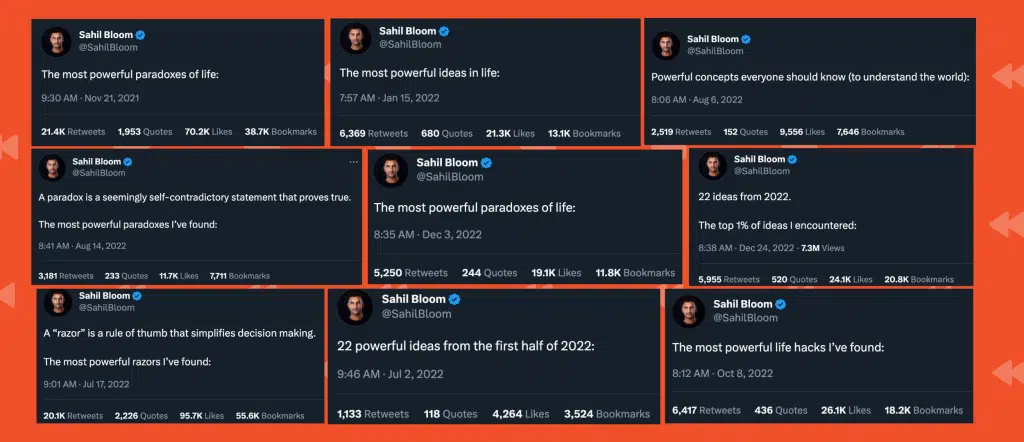
He has reused quite a few of these tweets as well.
The 101 Template
This is probably the most overdone template on Twitter now, but Sahil was doing A LOT of these when he first started on Twitter.
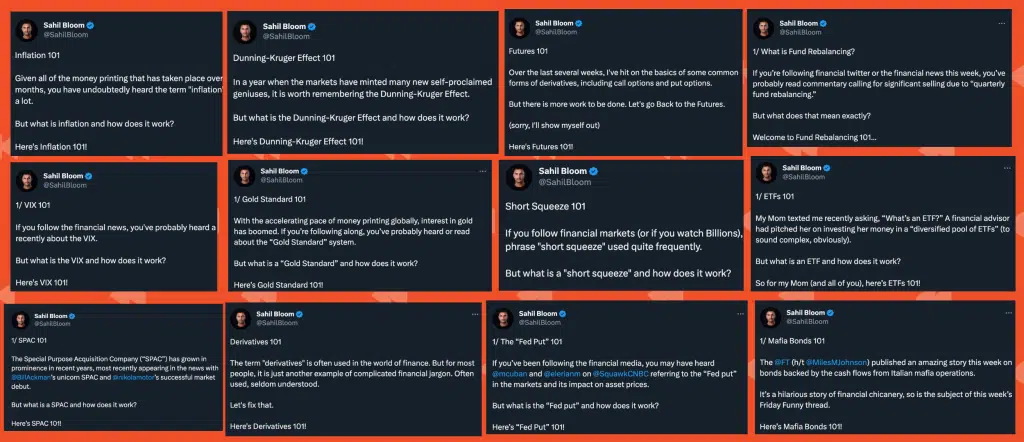
The best part is that these make sense because they are foundational topics he is going to end up linking back to from other threads (like the blogger method above).
Repurposing Content
I’ll make this one quick because it’s not a new idea we’ve seen with creators. Repurposing content is almost foundational to success on any platform.
You can’t expect to come up with a brand new topic or idea every day you go to write on social media.
Reusing tried and true posts can be a great way to ease the burden of the flywheel of creation. You can see in some of the screenshots above that Sahil has repurposed concepts and ideas over and over again.
As his following has grown, many of those people haven’t seen that before, so it’s a great way to go deeper on topics you’ve already been wrestling with.
6. Hustle for Distribution
Sahil knew he was going to have to give his content a big push if it was going to get seen.
He called this “hustling for distribution”. While he knew the content was great, he only had around 500 followers when posted his first thread on May 9, 2020.
Do you see that engagement? Over 3,700 likes on his very first thread?
Here’s how he “hustled” to get that distribution instead of waiting around for luck to happen.
Sahil went around Twitter and posted his thread under 50 or so accounts (his words)
Most of that went nowhere, since people probably just rolled their eyes because another guy was sharing his own stuff out of context.

But one retweet was all he needed to get the ball rolling.
And it came from Chamath, who had over 300k followers at the time.
I want to include another example of this that happened much later on.
It’s funny because he talks in interviews about this method like it was only with those first few threads, but here’s an example of him linking to his thread about the Feynman Technique under James Clear’s tweet:
The lesson? Never stop hustling for distribution.
7. Community & Relationships
You know I love this one, and in my research, I found multiple times when Sahil brought this up as an important pillar to his growth.
Intentional Relationships
Sahil knows how important relationships are to growth, whether it’s personal or business growth.
He actually has a really intentional way of making sure he’s furthering the relationships he’s already built, as well as creating new ones.
“I’ve always had this practice of every week try to make one new friend and try to catch up with one old friend. You don’t always hit it…but if you follow that as a general practice, good things tend to happen.”
Sahil Bloom on the Creator Science podcast
The 100k Club
Sahil was part of a text group chat they called the “100k Club” because they were all trying to get to 100k followers. Apparently, this started when they all had around 15-20k followers.
He told Calum Johnson that this group included some names you probably recognize:
- Sam Parr
- Shaan Puri
- Nick Huber
- Nikita Bier
- Greg Isenberg
- Julian Shapiro
Sahil calls community the “X Factor” of growth on Twitter. In an interview with Ayush Shukla he says:
When you start out on any of these platforms, you need a community of like-minded people who are at a similar stage trying to grow.
This has enormous effects…and it accelerates the entire pace of it because you’re growing together. You’re creating this rising tide for everyone within that group.
Sahil Bloom
Cross-Promotions
Oftentimes, these relationships you build can turn into cross-promotions and partnerships as well.
I found these two newsletter spots: one written by Codie Sanchez in the Contrarian Thinking newsletter; and one in Shaan Puri’s, The Milk Road.

The same week that Codie’s was placed, Sahil shouted out Contrarian Thinking in his newsletter.

These can help you grow via cross-promotions, but can also have a monetary impact.
Remember how Sam Parr was in the 100k Club with Sahil? Well, Trends, which is a community around the newsletter Sam founded called “The Hustle” ended up sponsoring Sahil’s newsletter.

You never know what kind of opportunities are going to come from the relationships you build.
8. More Recent Growth Levers
A lot of the things I’ve talked about above got him to some big numbers. But now he’s expanding that reach and starting to grow even more quickly.
A. The Sparkloop Flywheel
If you haven’t heard of Sparkloop, it’s essentially a recommendation platform that allows people in the network to recommend your newsletter and vice versa.
Some of these are free recommendations, and some are paid – meaning you can offer money for someone to send you subscribers.
Sahil has more recently started ramping up this paid side of things and will pay $1.50 per qualified subscriber. This Sparkloop engine goes hand in hand with paid ads, so let’s dig into that a little.
B. Paid Ads
Sahil has been using paid ads for a bit now to create almost a flywheel effect.
Nathan Barry details this in the thread below:
Here’s a quick summary of how Nathan’s broken it down in his post on Creator Flywheels:
- Get new subscribers from Twitter, LinkedIn, and Instagram.
- Send those people 2 newsletters per week, each with a sponsored placement
- The ConvertKit Sponsor Network sells sponsorships for him.
- Sahil reinvests that sponsor income into paid social ads, as well as SparkLoop’s partner network, where he offers $1.50 per subscriber
It’s it’s own beautiful flywheel that keeps growing and building over time.
Here are some of the paid ads he’s currently running on Facebook:

C. Expanding Platforms
Once he hit around 100k email subscribers and had over 620k followers on Twitter, he started adding more platforms to his content ecosystem.
In July 2022, he added LinkedIn and now has over 260k followers there.
He was posting around once a week on here in the beginning but said on the Creator Science podcast that Justin Welsh told him he needed to be posting there daily. He seems to have started growing there a lot faster since doing so.
Sahil says that LinkedIn has actually been driving the most newsletter signups from social for him lately (source: Iced Coffee Hour).
In September 2022, he started posting on Instagram and now has 324k followers. there.
He’s been using Instagram to build a relationship with his audience and share more visual content.
Podcasting Tour
Sahil has been on SO many podcasts in the last few months.
From what I can tell, he took a trip to India in January or February and got tens of interviews done while he was there.
But he’s also done a lot of interviews with North American based podcast hosts as well. I think he’s seen how these interviews help expand his reach and audience, as well as bring in more subscribers.
At the same time, the podcasts he goes on have excellent-quality video recordings and he’s been able to showcase these on his Instagram profile.

All of these reels were posted in the last 5-6 weeks.
It’s like Sahil is taking a page from the Gary Vee playbook and is using clips from interviews as a way to rapidly expand his reach and audience. Smart move.
He’s also using these podcast appearances to create content for ads:

How Sahil Bloom Makes Money
Sahil knows the importance of having multiple income streams, so he’s built up properties and businesses that support him.
Newsletter Sponsors
Each week, he publishes two issues of the Curiosity Chronicle:
- Wednesdays: He publishes a piece where he goes deep into mindset lessons, frameworks, and what he’s thinking about recently.
- Fridays: The Friday Five – 5 ideas that he curates to “spark curiosity heading into the weekend”
In November 2022, Sahil told the guys on My First Million that he was bringing in between $3,500-$6000 per email.
On the low end, that would be $28k per month. On the high end, $45k.
Since then, Sahil has outsourced his sponsorships to the ConvertKit Sponsor Network. This allows him to not have to think about getting sponsors, and their team takes a percentage of sales.
In a recent article, Nathan Barry said that Sahil brought in $22k in February (a short month) with sponsors.

I’d venture to guess he’s pulling in around $285k a year with sponsors alone.
Podcast Sponsors
From what I can tell, the sponsors for the podcast are not managed by ConvertKit.
At the moment, he’s working with Athletic Greens (as is seemingly every other big-named podcaster in the world).
These are private deals so I can’t really speculate much on them.
Job Board
This was a bigger deal months ago, but I don’t see him talking about this as much anymore.
Affiliate Marketing
Sahil told Ali Abdaal that he does have a few affiliate deals around products he uses, but they aren’t really a huge portion of his income.
Speaking
Sahil has done some public speaking engagements as well. I don’t know the monetary aspects of these but wanted to mention it.
Investing Fund
Sahil started SRB Ventures, which is a $10 million fund he raised to be able to invest “smaller” checks in pre-seed through Series C startups.
This is more of a long-term play from what I can tell, and he’ll make a percentage of the “wins”.
Other Businesses
Sahil also has a service-based agency that he’s mentioned before.
After running his Audience Building course in June 2021, there were students in there who now knew how to write great Twitter content.
He was able to connect those people with clients who wanted their content ghostwritten.
Seemed like a natural next step, and now he has an agency that he doesn’t spend a lot of time on, but brings in quite a bit of revenue per month (his words).
How You Can Replicate Sahil’s Success
There was a lot in thist post, but here are some of the ways I think you can start using some of these tactics to help your own growth journey.
A. Simplify Confusing Topics
Sahil got his start by creating content that simplified these high-level financial topics for people.
There are a number of ways you can simplify content for an audience.
- Add easy-to-understand visuals
- Use interesting examples and metaphors
- Combine multiple topics to help people understand
There is a reason why the “Explain it to me like I’m 5” craze has taken off.
B. Create a Content Ecosystem
Writers and bloggers have built their content libraries in a specific way on purpose: it works.
Having a good structure helps people navigate through your old content, find new ideas, and honestly, consume more of your content.
You don’t have to solely create this on Twitter either.
Is there a way you can start creating those foundational LinkedIn posts, or YouTube videos?
And then link back to other content down the road to keep people in your ecosystem.
Build Relationships
I will never stop talking about this one because it’s such a foundational piece of it all.
Relationships can lead to all kinds of wins for creators:
- Create collaborative content like Mario Gabriele has done in the past
- Help each other grow
- Tap into each other’s network
- Learn about what’s working on different platforms
- Build more connections
Intentionally building relationships with other creators almost sets off a flywheel effect.
Meet people -> Get introduced to others -> Meet more people
The Playlist
If you’re interested, here is my full podcast playlist from the research I did on Sahil Bloom:
